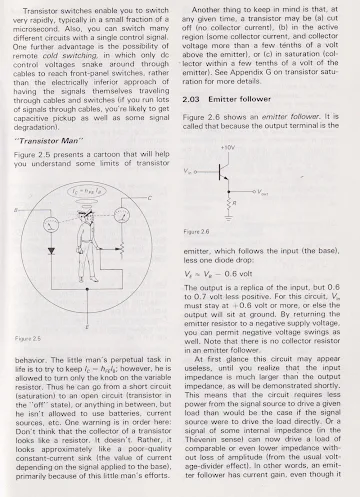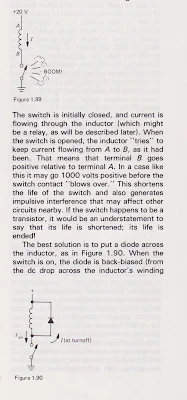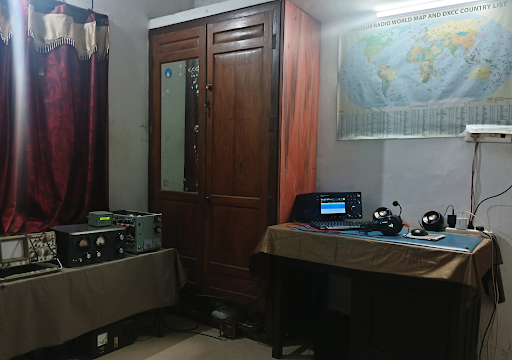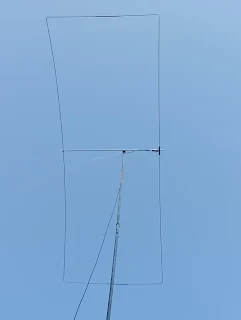Podcasting since 2005! Listen to Latest SolderSmoke
Saturday, September 23, 2023
Sunburst and Luminary -- An Apollo Memoir by Don Eyles (video)
Friday, September 22, 2023
"The Art of Electronics" #6 -- Transistor Man
In the interview about "The Art of Electronics" Lenor Fried had a shirt with "Transistor Man" on it.
Thursday, September 21, 2023
Marb Builds a Replica of Michael Faraday's Motor
Wednesday, September 20, 2023
The Art of Electronics #5 Paul Horowitz on SETI (and lots of other radio stuff)
Tuesday, September 19, 2023
"The Art of Electronics" #4 Boom! Putting Diodes Across Relay Coils
Monday, September 18, 2023
The Art of Electronics Post #3 -- The Element 14 Interview
And here is a great interview with Element14:
Sunday, September 17, 2023
"The Art of Electronics" Post #2 Interview with Lady Ada (Video)
Saturday, September 16, 2023
"The Art of Electronics" by Horowitz and Hill (First in a Series of Blog Posts on this Great Book)
Oh man, this book is so good. You really just need to buy it now. I put it in the Amazon link to the right.
OVER HERE >>>>>>>>>>>>>>>>>>>>>>>>>>>>>>>>>>>
The Imsai guy reminded me of this book, and pointed out that earlier editions are more reasonably priced, so I got the second edition (looks like 1980, reprinted many times through 1988). Dean KK4DAS got one too (I think he also got the second edition).
Lest there be any doubt that this book is for us, first let me point to the pictures of Paul Horowitz and Winfield Hill. https://artofelectronics.net/about/
Friday, September 15, 2023
HB2HB -- A Contact with Denny VU2DGR (video)
At first I didn't realize it was Denny. On September 11, 2023 at about 2330Z I had walked back into the shack after dinner. I think DX spots showed an Indian station on 20 meter SSB. Without realizing who it was, I tuned him in on my Mythbuster rig, heard the other station sign off, and quickly threw in my call. Denny came back to me right away, and I think both of us then realized that we recognized the call of the other station. Wow, it was Denny, VU2DGR, the Wizard of Kerala! At the time of the QSO, I didn't have my phone with me; after we spoke, I went to get it, so the video above captures part of Denny's subsequent contact. (You can also at one point hear Guapo barking.)
Denny has been running a wonderful station that combines SDR gear with and HDR tube type amplifier and a homebrew Moxon.
Here is Denny's station. The transceiver is a RadioBerry. the amplifier and power supply are on the other table.
Thursday, September 14, 2023
Building Nixie Tubes for a Hiroshima Project
Tuesday, September 12, 2023
BEZOS BUCKS ARE BACK!
With the help of several loyal SolderSmoke listeners, we finally cracked the code and figured out how to put the new Amazon Ads on the blog. You can see it on the right side of this page.
Right over here >>>>>>>>>>>>>>>>>>>>>>>>>
You don't have to buy whatever we are advertising. Just click on the SHOP NOW sign and begin your Amazon shopping there. In this way SolderSmoke will get a small commission on any purchase you make (within 24 hours of your initial click on the SHOP NOW icon).
Friday, September 8, 2023
Why Building for 10 Meters is Harder than Building for Lower Frequencies
Recently my trusty CCI EB63A .1kW amplifier has been in rebellion. On 10 meters, it now often insists on being an oscillator. It calms down nicely on 20 meters. But on 10, it has been a rebellious beast.
Why is this? Why would an amplifier that is well behaved and stable on 20 meters behave so badly on 10 meters?
I used LTSpice to explore the problem.
I looked at two ordinary wires. I gave them each a value of .003 uH. Very low. Then I joined them together in a transformer. I put a 1 volt signal into the primary and looked (in LTSpice) at how much of a signal appeared in the secondary. First, the result on 14 MHz. About 250 mV appears on the secondary.












































